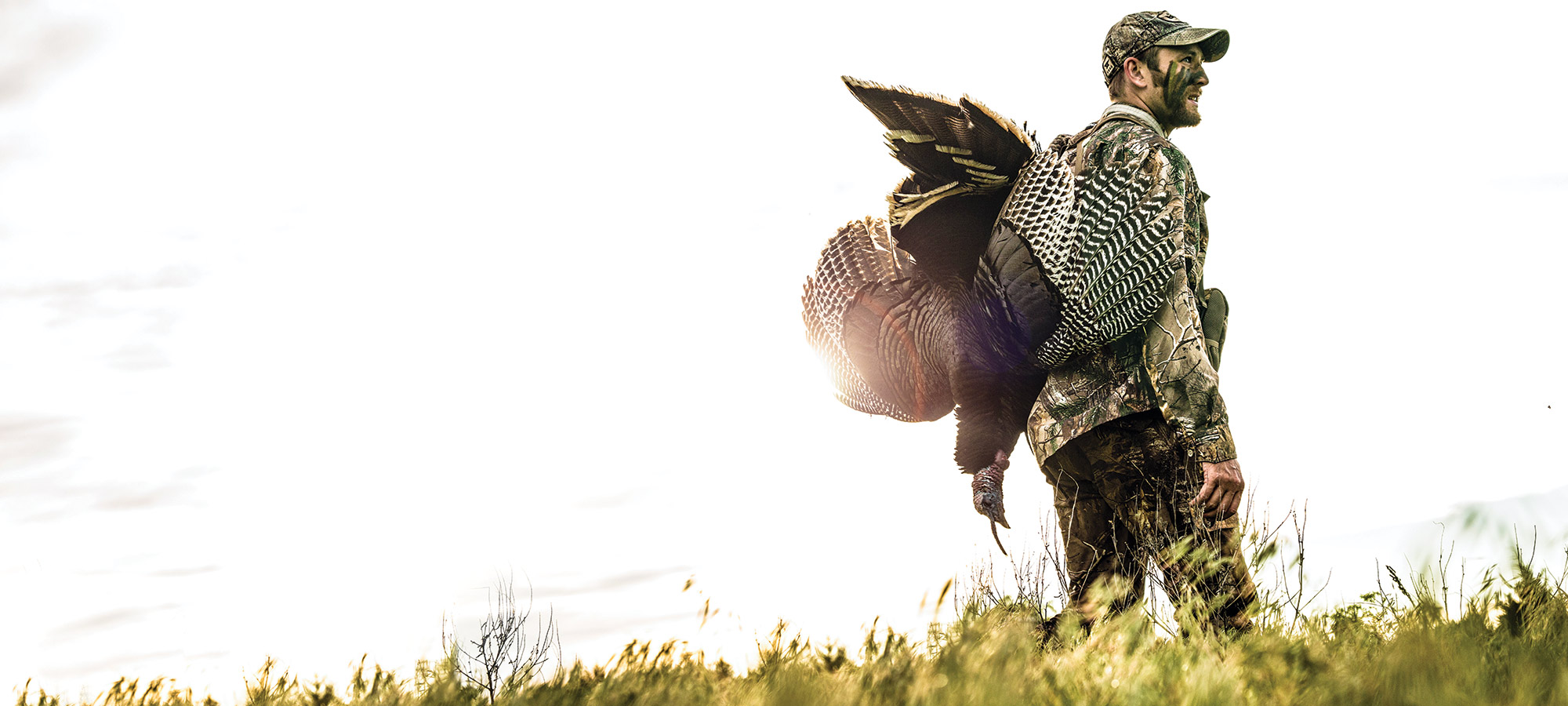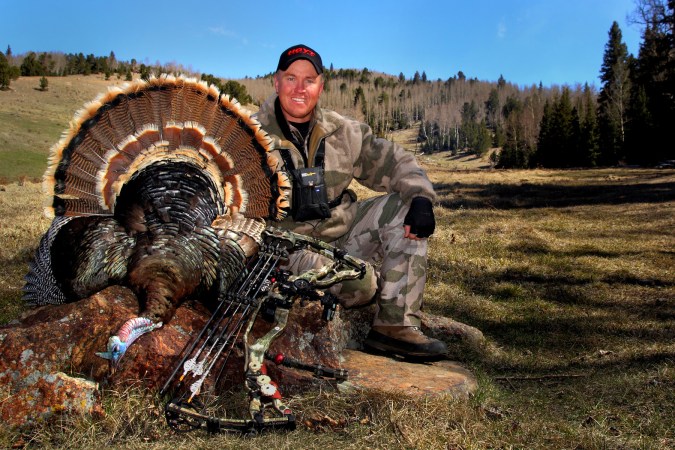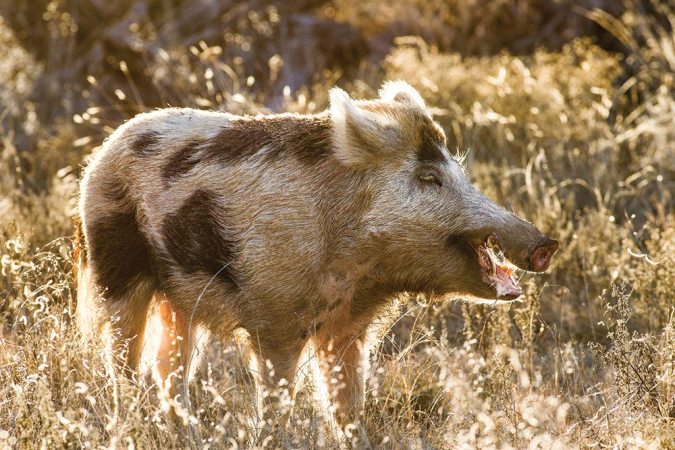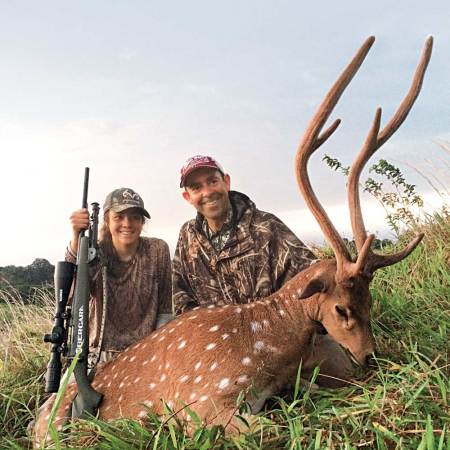By mid-May, turkey season is over in the South. The fields where gobblers strutted a month ago have grown knee-high and are home to a good hatch of chiggers. Kerry B. Wix and I have been chasing Easterns and Osceolas since early March, but it’s not enough to suit either of us. A Tennessean, Wix has a life-size turkey feather tattooed on his forearm and a thousand-dollar mouth-call jig in his basement. He’s never killed a Merriam’s gobbler, and that’s reason enough to keep this madness moving to Nebraska, where there’s another two weeks of season left—and three tags apiece. We’re meeting up with Jeremy Atkins, a Cornhusker native and one of the owners of Big&J deer attractants. Atkins grew up in Platte River country, and big whitetails are his passion. But he knows every roost tree in the vicinity too, and considers Nebraska beef overrated when compared with fried wild turkey. “I’ll shoot the first three jakes that stand still, and not give one damn about it,” he says. “They’re delicious.” Of course, the Plains are known for sounds other than gobbling in spring. After we hunt some, Atkins says, we should go chase tornadoes, since the forecast looks good for funnel clouds.
Wix narrows his eyes. The thought of coming to Nebraska and having to break from hunting to even sleep or eat gets him triggered—and I’m not sure he’s at all willing to take a break to go looking for a tornado.
“I’d rather focus on turkeys first,” he says.
Atkins laughs and motions for us to get in his truck. “Take some time to enjoy the sights, Wix. We’ve got the turkey part pretty well wrapped up,” he says. “Let’s go roost a bird right now.”
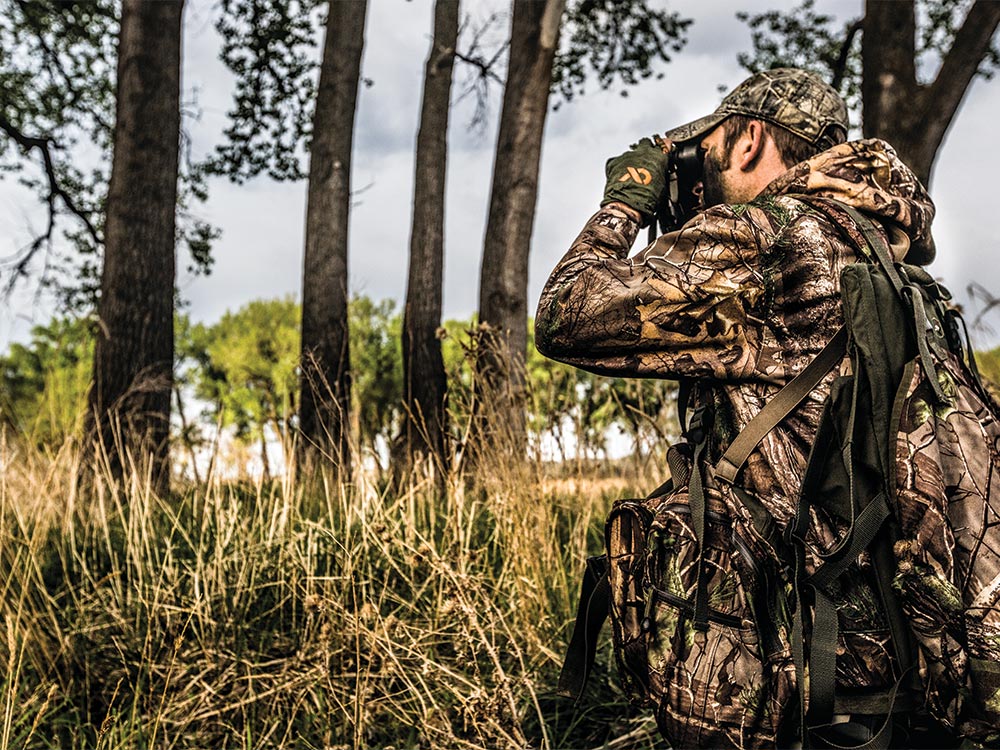
PRAIRIE SAMPLER
The countryside along the Platte River is a mosaic of grasslands and crop fields, divided by rows of mature cottonwoods and oaks snaking between. Like similar habitat I’ve hunted in South Dakota, Kansas, and Oklahoma, it’s loaded with gobblers. You can still find a place to hunt here by knocking on doors, but the old rumor that no one out West cares about turkeys is pretty much a thing of the past. It’s not southern Alabama, but there is some real hunting pressure, and access is a lot easier with a local contact.
Atkins seems to know every farm and farmer in the area (that he’s the purveyor of good, high-protein deer feed seems to help our cause). As we drive, he points to various fields and fencelines. “Turkeys in that lot, and we can hunt it,” he says at one place. At another: “That spot would be killer, but the old man who owns it doesn’t allow hunting.”
Farther along, we drive through a neighborhood and pass a flock of 25 or more turkeys scratching up the front lawns of two houses. There are a half dozen strutters, one of which has a gorgeous white-tipped fan. We’re just far enough west to dabble in the Merriam’s bloodline, but the flock here has both Rio Grande and hybrid origins too; most of the birds have caramel-colored fans. Still, seeing a Merriam’s gobbler in the flesh seems to light a fire in Wix, who begins squirming in the front seat like a kid reaching for ice cream. “God, look at that beautiful son of a bitch!” he yells.
Atkins slows the truck and smiles. “Watch this.” He leans out the window, spits a forceful stream of tobacco juice, and yells, “Hoooo!” All six gobblers roar back at once, a sound that’s sharper and higher-pitched than that of our Easterns at home but causes the hair on my neck to stand up all the same. “Yard turkeys,” he says. “They’re wild but not really. They roost in the city limits and never get hunted. I’m afraid the birds we’re after won’t be quite that easy.”

ROOST RAID
We’re not far out of the neighborhood before Atkins slows his truck again and looks out his window. “Usually they hang out on this side of the road all day, where I can’t hunt, but sometimes—whoop, there they are right there!” He points out the passenger window to a 10-acre woodlot abutting a huge cut cornfield. There are cattle milling in the woods, and the turkeys are picking and strutting all around them.
“That’s what I was hoping to see,” says Atkins. “They don’t roost over here every night, but when they do, they pitch into that cornfield, hang out a while, and then cross the road later in the morning. I bet they’ll be flying up in the next 10 minutes. We can kill a tom in here tomorrow, but we have to sneak in super early.”
Roost hunts in the Plains states are special. Gobblers in the East can fly up about wherever they want, but in Nebraska, it’s not unusual for 50 turkeys to pile into a few big cottonwoods because they’re the only suitable trees around. On a calm morning, the yelping and gobbling you’ll hear in these spots is almost deafening.
We sneak into the wood lot two hours before sunrise and set up a jake and hen decoy pair 15 yards into the cornfield. I’m on the gun, while Wix is filming the hunt over my shoulder. All of us are calling. By daybreak, birds are gobbling and yelping all around us. Hens pitch into the field, and minutes later, three fat strutters with snowball heads march past our right shoulders not 10 yards away, and head straight to the decoys. One of them circles the jake, itching for a fight, and my heart is pounding as if it’s the first turkey I’ve seen all season. I drop him where he stands.
TOM TWISTER
Over the next few days, we hopscotch among small farms. We’re in birds nearly every stop. The pace out here in the late season is punishing because it’s light enough to shoot by a quarter to six in the morning—and turkeys aren’t flying up until nine at night.
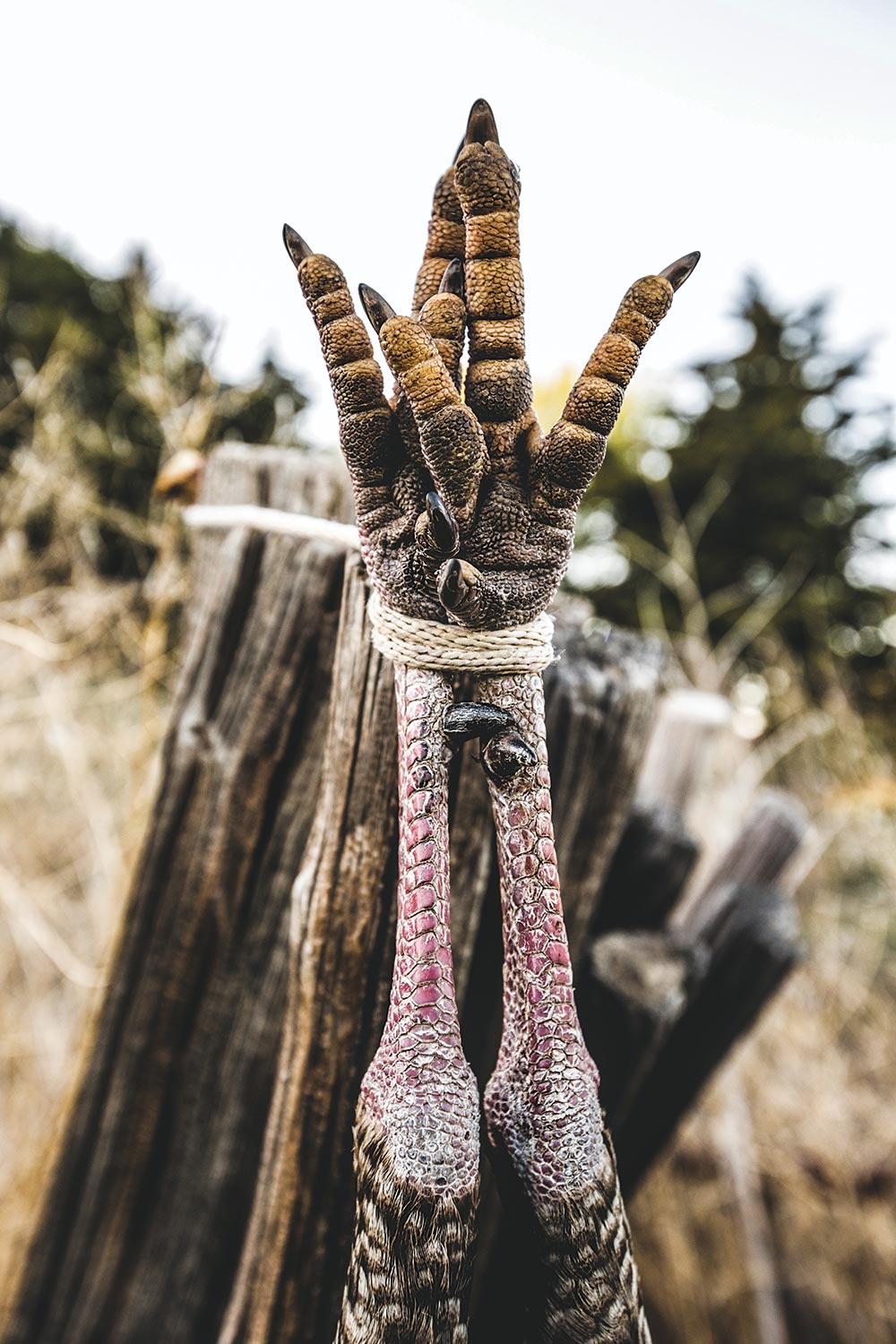
Yet with so much country and so many birds, we can’t stop ourselves. Much of the sleep we get happens leaning against a tree. Lunch is usually an apple and some jerky rummaged from the bowels of a turkey vest. We reap field strutters during midday and wake up extra early for more roost hunts. Wix shoots his Merriam’s late one evening when it slips in silently to check out our decoys and calling.
One day around noon, while driving to a new farm, we notice the skies turning an eerie black and subtle green. Atkins turns up the radio and, sure enough, there’s a tornado warning. Light rain abruptly becomes a pounding deluge, then driving hail. But we ignore all that when Atkins spots a turkey.
“There’s a longbeard right there,” he says. To our right, a lone gobbler is standing in a small field, attempting to fluff his feathers in the rain. He’s not 30 yards from a waist-high berm. No way he’d respond to a call in this weather—but you couldn’t pick an easier place to stalk a turkey. Then Atkins hits us with a revelation: “I have that field leased.”
He drives a quarter mile up the road, and we jump out of the truck, Wix with a shotgun and turkey fan, and me with a camera that I’m struggling to keep dry. I’ve never had hail hit me in the face before, and it hurts, but we keep going and sneak our way to the back of the berm.
Forgetting the weather, the stalk itself seems almost too easy—until the gobbler spots us at the last second. He’s just 35 yards off but turning to run. Wix drops the fan, shoots, and misses. The turkey disappears into the timber, which is now bending sideways against the roaring wind. My hat is sucked off my head. I grab it before it’s gone, and Wix and I make a run for the truck as fast as waterlogged five-pocket pants allow. Atkins is throwing mud as he speeds to us. “Y’all are nuts,” he says with a laugh as we climb into the vehicle. I pour water out of a boot. “The twister went right around us, though.”

As Atkins drives, listening to the radio, we pass uprooted cottonwoods and an irrigation pivot that’s been twisted into a heap of scrap metal. The tornado had picked it up and slammed it into the soil while we were sneaking up on the gobbler.
“There she is up ahead,” Atkins says. Sure enough, a towering funnel cloud is creeping across the prairie. It’s as captivating as it is frightening, and I can understand why people feel compelled to chase them. Just like that, it dissipates into sunshine and a rainbow. We’ve broken some tornado safety rules, but those rules weren’t written with turkey hunters in mind.
Atkins asks if we want to run back to the hotel for a change of clothes. Maybe later. Right now, it’s spring in Nebraska—and we have more turkey tags to fill.
Read Next: 4 Turkey Hunting Tactics
PRAIRIE RINGERS
Sound carries a long way in open country, and Merriam’s gobblers will come to a call from notoriously long distances. Use your standby yelps and clucks for hunting in the woods and calling toms that final 100 yards. But when you’re trying to strike midday birds, err on the side of loud and obnoxious. And when a gobbler answers, look immediately for a place to sit. I always carry these three calls out West.
Zink Wicked Box Call


